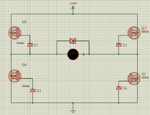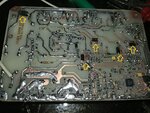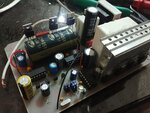Em_13
Junior Member level 3
I have built a 220v pure sine inverter using EG8010 spwm ASIC.
the Circuit is overload protected by using shunt and op-amp,But It's not protected from output sparks.
Here is the original circuit:
Every thing is OK,Except when we have spark at output which leads one or more mosfet and even driver IC to burn.
Can I put 13 or 15v zener diode between source and gates to protect mosfets and driver ICs like this:
the Circuit is overload protected by using shunt and op-amp,But It's not protected from output sparks.
Here is the original circuit:
Every thing is OK,Except when we have spark at output which leads one or more mosfet and even driver IC to burn.
Can I put 13 or 15v zener diode between source and gates to protect mosfets and driver ICs like this:




